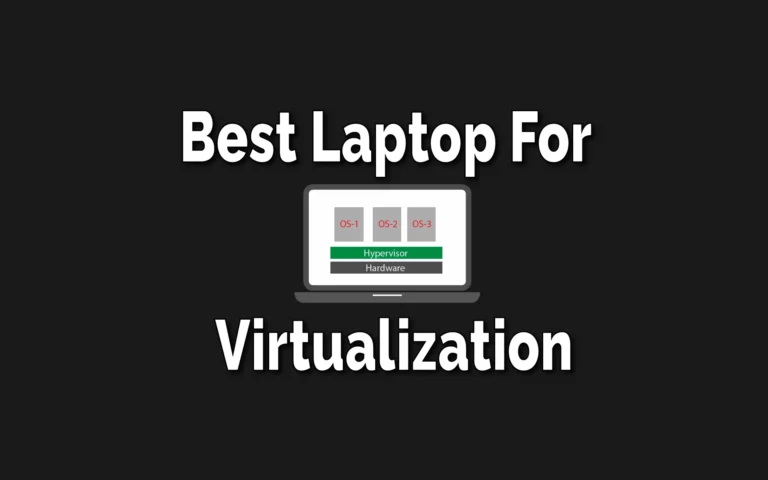This post may contain affiliate links/ads and I may earn a small commission when you click on the links/ads at no additional cost to you. As an Amazon Affiliate, I earn from qualifying purchases. Techsphinx also participates in the StationX Affiliate program. You can read my full disclaimer here.
Whether you want to test your software on different operating systems or want to create a lab for pentesting purposes or you just want to run Linux distros without removing Windows/dual-booting, whatever the case, buying multiple laptops will not be a suitable and cost-friendly option.
So, wouldn’t it be better if you can run multiple OS on a single machine? Yes! you can achieve this using a technology called virtualization.
Through virtualization, you can install and run any operating system as a virtual machine. The OS running as virtual machines will have its own isolated resources such as CPU, RAM, storage etc.
There are software like VMware, VirtualBox, KVM etc. that can help you achieve this. These are called hypervisors.
You can either install a hypervisor directly on the hardware and install virtual machines on it (bare metal) or you can install the hypervisor on top of any existing operating system such as Windows or Linux (type 2 hypervisors) and then run your virtual machines on it.
In any case, you’ll require a significant amount of resources (CPU, RAM, Storage) on that single laptop to run virtual machines on it.
Update (2023): Added Dell XPS 15 9520 Laptop.
Here’s the summary of the best laptop for Virtualization in 2023:
| Dell XPS 15 9520 | See details at Amazon |
| Acer Nitro 5 | See details at Amazon |
| ASUS ROG Strix G15 | See details at Amazon |
| Lenovo ThinkPad T14s Gen 2 | See details at Amazon |
| Acer Predator Helios 300 | See details at Amazon |
| Lenovo Flex 5 Laptop | See details at Amazon |
Things to keep in mind
1. The list of features and specs mentioned here may vary depending on the laptop model available in your region. Make sure to check the specs and features thoroughly before purchasing.
2. I am mentioning some key features for each laptop mentioned in this post. For a full list of hardware specs and features visit the official website of the laptop manufacturer.
3. This list is not in any ranking order. Buy the laptop according to your virtualization needs.
Best Laptop for Virtualization
1. Dell XPS 15 9520
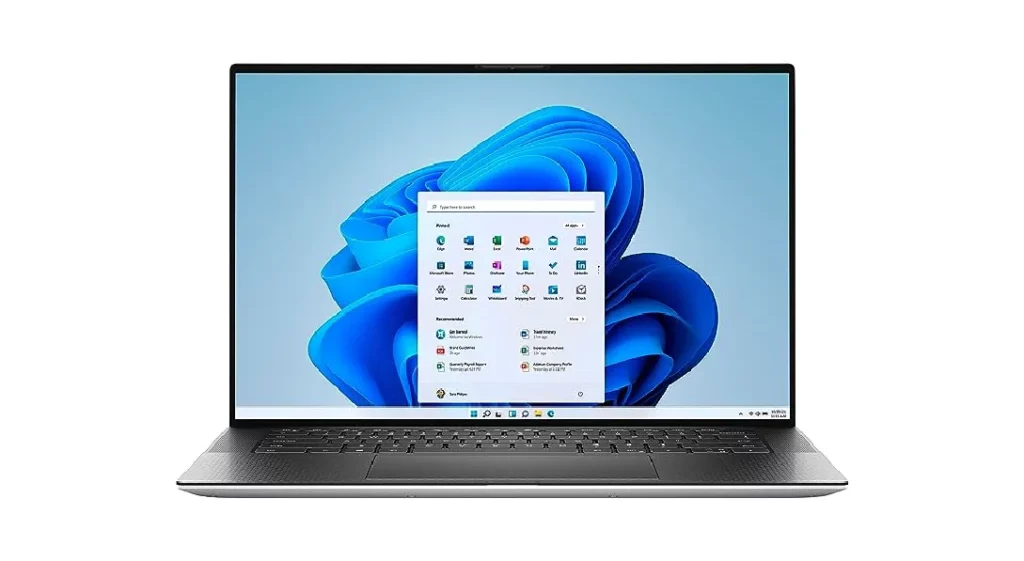
| Model | XPS 15 9520 |
| Processor | Intel Core i7-12700H (14 cores, 20 threads) |
| Memory | 64 GB DDR5 RAM |
| Storage | 2TB NVMe SSD |
| Dimensions | 13.56 x 9.06 x 0.73 in |
| Upgradable | RAM upgradeable to 64 GB |
The first on this Best Laptop for Virtualization list is the Dell XPS 15 9520. This laptop ships with a 12th Gen Intel i7-12700H processor that has 14 cores, 20 threads and 24 MB Intel Smart Cache.
The 14 cores are divided into two segments – 6 Performance cores and 8 Efficient cores. All the latest intel processors are using this segmentation. You can learn more about this hybrid design on the Intel website.
The max turbo frequency of the performance core is up to 4.70 GHz whereas the max turbo frequency of the efficient core is up to 3.50 GHz.
Dell XPS 15 is available in various RAM and storage configurations. The one I am mentioning here has 64 GB DDR5 RAM and 2 TB NVMe SSD storage. The 64 GB RAM is the maximum upgradable amount of memory for this system.
As for the display, it has a 15.6″ FHD+ Anti-glare Display with a refresh rate of 60Hz. It also ships with a 4 GB GDDR6 NVIDIA GeForce RTX 3050 Ti Graphics card.
Some other interesting features of this laptop include – WiFi 6E, Bluetooth 5.2, Backlit keyboard and a fingerprint reader. All these features not only make Dell XPS 15 9520 the best laptop for virtualization but also a great laptop for day-to-day office and business use.
Key Features Dell XPS 15:
- 15.6″ FHD+ Anti-Glare Display.
- WiFi 6E and Bluetooth 5.2 Included.
- NVIDIA GeForce RTX 3050 Ti (4GB GDDR6) Graphics.
- 2 x Thunderbolt 4 (USB Type-C) with DisplayPort and Power Delivery, 1x USB 3.2 Gen 2 Type-C (with DisplayPort and power delivery), 1x SD-Card Reader, 1 x Audio Jack.
- Backlit Keyboard with Fingerprint Reader.
- 6 Cell Li-ion Battery.
2. Acer Nitro 5
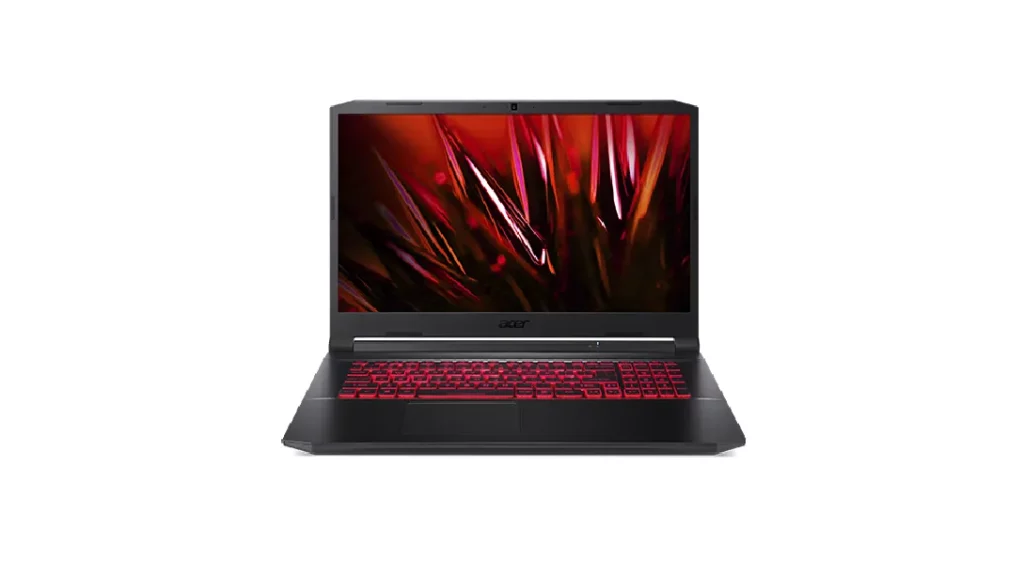
| Model | AN517-54-79L1 |
| Processor | Intel Core i7-11800H (8 Core/16 Threads) |
| Memory | 16 GB DDR4 SDRAM |
| Storage | 1TB NVMe SSD |
| Dimensions | 15.9 x 11 x 0.98 in |
| Upgradable | RAM upgradeable to 32 GB |
Acer Nitro 5 is equipped with an Intel Core i7-11800H processor. The processor has 8 cores, 16 threads and a 24 MB Intel Smart Cache. It offers a configurable base frequency of 2.30 GHz and a max turbo frequency of 4.60 GHz.
Acer Nitro 5 ships with 16 GB DDR4 RAM. Although 16 GB is enough for basic usage, you can upgrade the RAM to 32 GB for a smooth virtualization experience.
As for storage, this laptop has a 1 TB NVMe SSD which will prove useful when running multiple virtual machines that require a significant amount of storage.
Since this is a gaming laptop, it has a Full HD 17.3″ 1920 x 1080 resolution display with a 144Hz refresh rate. It also has a 4 GB GDDR6 Nvidia GeForce RTX 3050Ti graphics card.
The graphic card doesn’t play a vital role when it comes to virtualization. However, if you want to use the laptop for other purposes like designing or gaming then it is a must.
Lastly, the 4-cell Lithium-Ion (Li-Ion) Battery can provide up to 8 Hrs of backup, but that depends on your usage.
If you want a good gaming laptop with an Intel processor for a seamless virtualization experience, then Acer Nitro 5 will be the best choice.
Key Features of Acer Nitro 5:
- 17.3″ Full-HD Display.
- Supports IEEE 802.11 a/b/g/n/ac/ax wireless standards.
- Bluetooth 5.2 included.
- Built-in Microphone.
- Nvidia GeForce RTX 3050Ti Graphics Card.
- 2 x USB 3.2 Gen 1 Type-A Ports, 1 x USB 3.2 Gen 2 Type-A Port and 1 x USB 3.2 Gen 2 Type-C Port.
- Keyboard backlight.
- 4-cell Lithium-Ion (Li-Ion) Battery for up to 8 hrs backup (depends on usage)
3. ASUS ROG Strix G15

| Model | G513QM-ES94 |
| Processor | AMD Ryzen 9 5900HX (8-core/16-thread) |
| Memory | 16GB DDR4 |
| Storage | 512GB PCIe NVMe SSD |
| Dimensions | 13.94 x 10.2 x 1.07 in |
| Upgradable | RAM upgradable to 32 GB |
Asus ROG Strix G15 ships with AMD Ryzen 9 5900HX processor. The processor has 8 cores and 16 threads. It offers a base clock speed of 3.3GHz and a max boost clock speed up to 4.6GHz.
This laptop ships with 16GB DDR4 RAM that can be upgraded to 32 GB. Also, a 512 PCI-e SSD is included for storage.
As a gaming laptop, Asus ROG Strix offers a 15.6” Full-HD Anti-Glare Display with a refresh rate of 144Hz. Also, the GPU included is 6 GB GDDR6 NVIDIA GeForce RTX 3060.
Features such as a Backlit keyboard, WiFi 6 support, Bluetooth 5.1, ROG intelligent Cooling and Streamlined Body Design are icing on the cake.
Asus ROG Strix G15 is an optimum choice if you want a laptop with an AMD processor for your virtualization needs.
Key Features of ASUS ROG Strix G15:
- 15.6-inch Full-HD Anti-Glare Display.
- 3x USB 3.2 Gen 1 Type-A and 1x USB 3.2 Gen 2 Type-C Ports.
- Backlit Chiclet Keyboard.
- Built-in array microphone.
- Wi-Fi 6(802.11ax) (Dual band) 2*2 Support.
- Bluetooth 5.1 (version may change with OS upgrades).
- NVIDIA GeForce RTX 3060 GPU.
- 4-cell Li-ion battery.
4. Lenovo ThinkPad T14s Gen 2
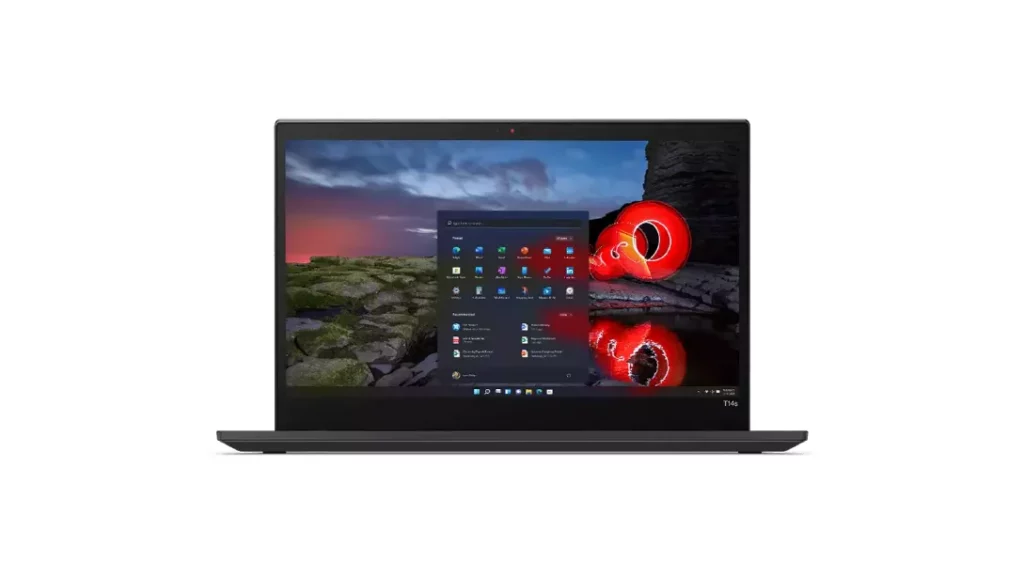
| Model | Lenovo ThinkPad T14s Gen 2 |
| Processor | AMD Ryzen 7 PRO 5850U (8 Cores/16 Threads) |
| Memory | 32GB DDR4 RAM |
| Storage | 1TB PCIe NVMe SSD |
| Dimensions | 12.89 x 8.82 x 0.64 in |
| Upgradable | RAM is not upgradable |
Lenovo ThinkPad T14s Gen 2 ships with AMD Ryzen 7 PRO 5850U processor. It has 8 cores/16 Threads and offers a base clock speed of 1.9GHz and a max boost clock up to 4.4GHz.
Although Lenovo ThinkPad T14s Gen 2 offers 16GB RAM and 512GB PCI-e SSD, this model on Amazon is upgraded to 32 GB RAM and 1 TB PCI-e NVMe SSD storage.
As for the display, this laptop has a 14.0″ Full HD antiglare touch screen display. This laptop doesn’t have a dedicated graphics card like the previously mentioned laptops on this list. It has integrated AMD Radeon Graphics. As graphics card doesn’t play a vital role in Virtualization, integrated graphics will be sufficient.
Apart from all the above-mentioned features, you’ll also get a fingerprint reader, WiFi 6 and Bluetooth 5.2 support.
It is a bit pricey when compared to other laptops in this segment. However, Lenovo ThinkPad T14s Gen 2 is a great AMD laptop for professional work and virtualization.
Key Features of Lenovo ThinkPad T14s Gen 2:
- 14.0″ IPS, antiglare Display available in different variants and additional features.
- 802.11AX (2 x 2) & Bluetooth 5.2 included.
- Backlit Keyboard and Fingerprint Reader available.
- Integrated AMD Radeon Graphics.
- 2 x USB 3.2 Gen 1 port, 1 x 3.2 USB Type-C port.
5. Acer Predator Helios 300
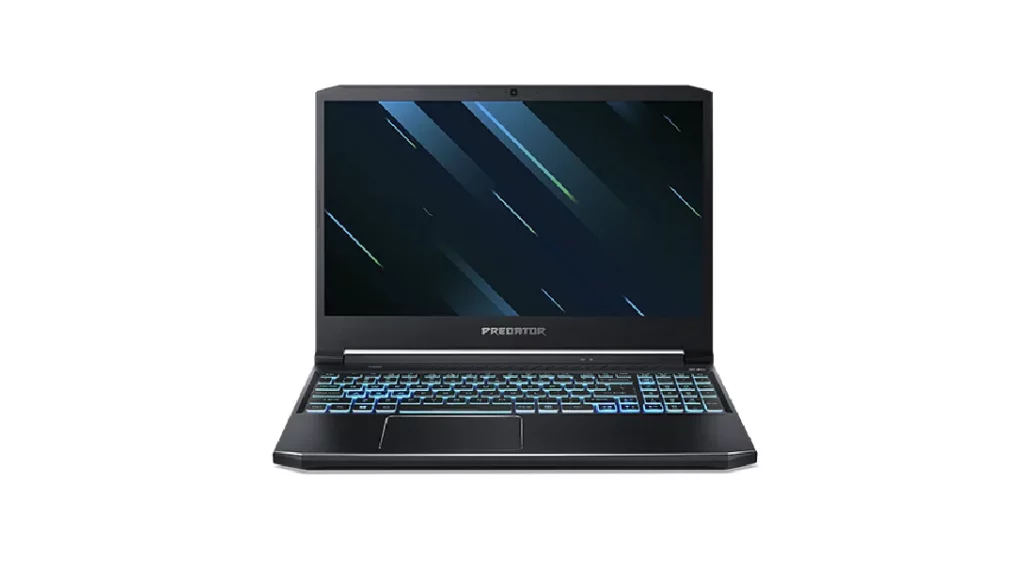
| Model | PH315-53-72XD |
| Processor | Intel i7-10750H (6 Cores/12 Threads) |
| Memory | 16 GB DDR4 SDRAM |
| Storage | 512GB NVMe SSD |
| Dimensions | 14.3 x 10.04 x 0.9 in |
| Upgradable | RAM upgradable to 32 GB |
Acer Predator Helios 300 is bundled with an Intel i7-10750H processor. It is a Hexa-core (6 core) processor with 12 threads and offers a base frequency of 2.60 GHz. Its max turbo frequency can go up to 5.00 GHz.
It has 16 GB DDR4 RAM and 512 GB NVMe SSD for storage. The RAM can be upgraded to 32 GB for a seamless virtualization experience.
Since this is a gaming laptop, it comes with a 15.6” Full HD Display with a 144Hz refresh rate and a 6 GB GDDR6 Nvidia GeForce RTX 2060 Graphics card.
Some other notable features this laptop includes are a Backlit keyboard, Multi-Touch Gesture Touchpad, WiFi 6 and Bluetooth 5.0 support.
The 4-cell Lithium-Ion battery can provide a backup for up to 6 hrs. Although, this will depend on your usage.
Key Features of Acer Predator Helios 300:
- 15.6″ Full HD Display.
- Supports 802.11 a/b/g/n/ac/ax Wireless Standards.
- Built-in Microphone and Bluetooth 5.0.
- 2 x USB 3.2 Gen 1 Type-A Ports, 1 x USB 3.2 Gen 2 Type-A Port and 1 x USB 3.2 Gen 2 Type-C Port.
- Backlit keyboard and Multi-Touch Gesture Touchpad.
- Nvidia GeForce RTX 2060 GPU.
- 4-cell Lithium-Ion (Li-Ion) Battery with up to 6 Hrs backup (depends on usage).
6. Lenovo Flex 5 Laptop
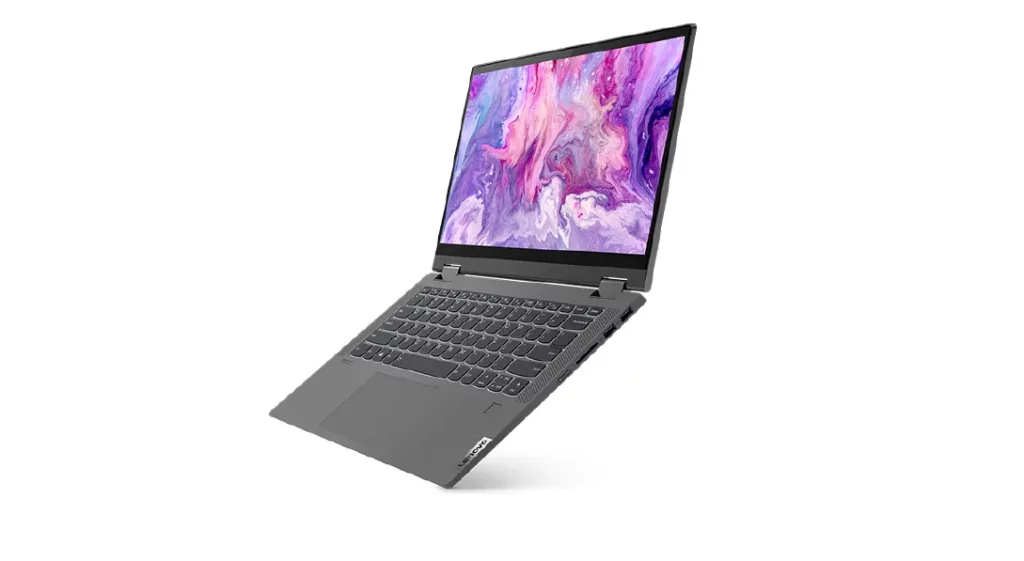
| Model | Lenovo Flex 5 Laptop |
| Processor | AMD Ryzen 5 5500U (6 Cores/12 Threads) |
| Memory | 16GB DDR4 |
| Storage | 256GB NVMe SSD |
| Dimensions | 12.65 x 8.56 x 0.82 in |
| Upgradable | RAM not Upgradable |
Last on the best laptop for virtualization list is the Lenovo Fex 5 Laptop. It ships with AMD Ryzen 5 5500U processor that has 6 cores and 12 threads.
The processor has a base clock speed of 2.1GHz and a max boost clock of up to 4.0GHz. As for memory, it has 16 GB DDR4 RAM that cannot be upgraded any further. A 256 GB NVMe SSD is included for storage.
It has a 14.0″ Full HD touchscreen display and also has integrated Radeon Graphics.
The specs of the Lenovo Flex 5 are not high as compared to other laptops mentioned in this list. However, it is also the cheapest laptop you can get for basic virtualization needs.
So, if you are in the market looking for a low-budget laptop for virtualization, then check out the Lenovo Flex 5 laptop.
Key Features of Lenovo Flex 5 Laptop:
- 14″ Full HD IPS Touch Display.
- Integrated AMD Radeon Graphics.
- 2 x USB 3.2 Gen 1 ports, 1 x USB-C 3.2 Gen 1 Port with Power Delivery.
- Backlit Keyboard and Lenovo Digital Pen (optional).
- 802.11AC (2 x 2) & Bluetooth 5.0 included.
Laptop for Virtualization Buying Guide
What to look for when buying a Laptop for Virtualization?
If you are planning to buy a laptop for virtualization, then first of all look at your particular use case. Whether you want to test different Linux distros or you want to do some heavy lifting work like compiling/building projects.
For basic virtualization uses any laptop with 6 core processor and 16 GB RAM will be fine, but for the heavy use case, you’ll need a higher-core processor and lots of RAM.
Processor
The two major players in the world of processors (CPU) are Intel and AMD. They both offer virtualization features; VT-x, VT-d in Intel CPUs and AMD-V, AMD-Vi in AMD CPUs.
One thing to keep in mind is the number of cores. The more cores the better. However, on the low side, it is recommended to have at least a Hexa-core (6 cores) CPU for a good virtualization experience.
Memory (RAM)
Apart from CPU, running Virtual Machines on laptop will require a significant of RAM. The exact memory required for virtualization will depend on your use case. However, having a minimum of 16 GB RAM will be a good starting point.
32 GB RAM or more is recommended for a smooth virtualization experience. If your Laptop allows memory expansion, then you can go for it as the need arises.
Storage
It is recommended to have a Solid State Drive (SSD) on your laptop for better performance.
Since SSDs are faster and more power-efficient than traditional HDDs, they will prove useful when running multiple virtual machines that may require a significant amount of read/write operations.
Graphics Card (GPU)
The most important aspects of virtualization require a good processor (one with more cores) and lots of RAM.
Having a Graphics card is not necessary unless you are specifically working on a project that requires a GPU pass-through.
Most laptops that have a good processor and memory will also have a graphics card. This significantly increases the price of the laptop. Therefore, if you have the option to choose the graphics card in any laptop model, then don’t go for a high-end GPU. Doing this will save you some money.
Frequently Asked Questions
Not all laptops are suitable for virtualization. You should opt for laptops with high-end hardware, as running multiple virtual machines simultaneously demands significant resources. Look for laptops that meet the necessary specifications mentioned above to handle virtualization tasks effectively.
You can run various virtualization software on a laptop. Popular options include VMware Workstation, VirtualBox, KVM and Microsoft Hyper-V. Each has its strengths and use cases, so choose the one that best fits your needs and is compatible with your laptop’s hardware.
Yes, it is possible to use a laptop for virtualization without significant performance compromises. Ensure that your laptop meets the recommended hardware requirements for the virtualization software you plan to use and avoid running too many resource-intensive virtual machines simultaneously.
While virtualization can be resource-intensive, many laptops designed for virtualization tasks can also handle gaming to some extent. However, for the best gaming experience, it’s recommended to have a gaming laptop that has a powerful GPU and cooling system optimized for gaming.
Yes, if you require more power and resources for virtualization tasks, you can consider using a desktop PC for virtualization or a dedicated server. Desktops can often be customized with more powerful components, while servers are designed for heavy virtualization workloads and can support multiple virtual machines simultaneously. However, laptops provide the advantage of portability and are suitable for individuals who need virtualization on the go.
Conclusion
This concludes the best laptop for virtualization list. Depending on your use case, you can choose any laptop for your virtualization needs.
If you are interested in building a PC for virtualization, then do check out my other post on the best CPU for Virtualization.
If you like this post, then follow Techsphinx on Facebook and Twitter for more reviews, tricks, tips and tutorials.
This article needs update or correction? Report the issue here so I can update it.
